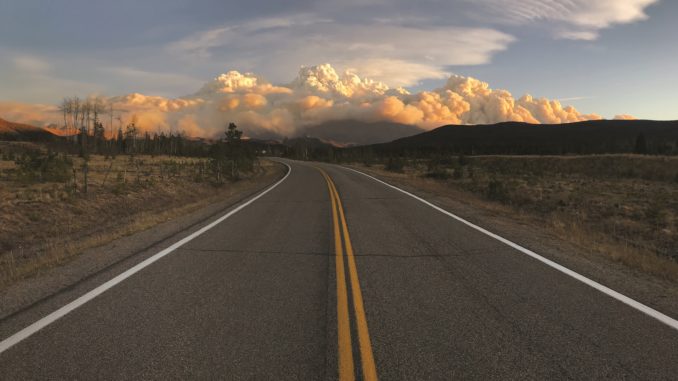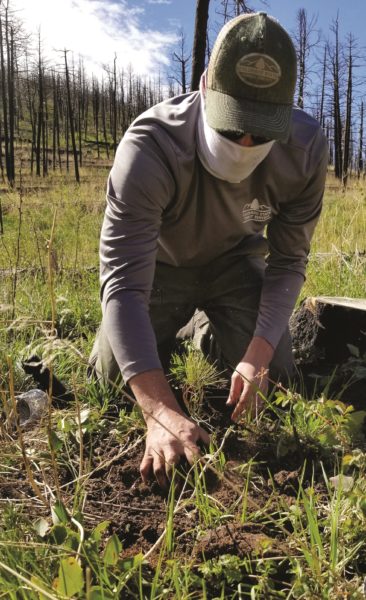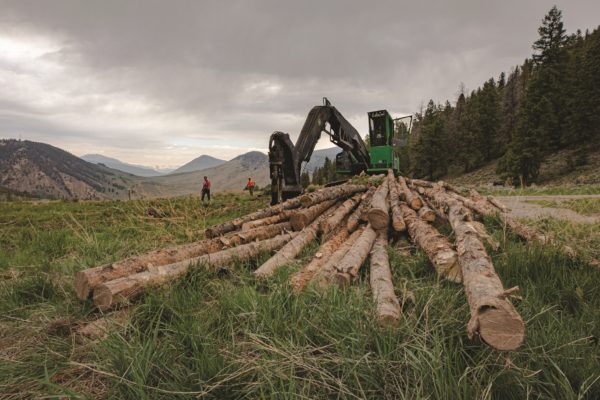
The Colorado State Forest Service has published its annual forest health report, highlighting the current conditions on forests statewide and how the agency is improving the health of the forests following the historic wildfires of last year.
The report reflects the growing need to increase forest management statewide in addition to taking a regional look at forest health, offering statistics, insect and disease trends, and successes in forest management specific to four quadrants of the state. The report offers an outlook on the carbon storage problem in the state’s forests.
“Last year reminded us how important our forests are, as Coloradans escaped to forested areas in their communities and wildlands for tranquility, peace, and a place to recreate and exercise,” said Mike Lester, state forester and director of the CSFS. “In this report, we take a look at what is needed to protect the many benefits our forests provide in the face of these challenges – and what the Colorado State Forest Service is doing to address them,” Mike said.

Key takeaways from the 2020 report on the Health of Colorado’s Forests are as follows:
- Living with Wildfire: The forest management needed to reduce wildfire risk to residents, lands, water supplies, and economies are not happening fast enough. Colorado is primed to face the same types of uncharacteristic wildfires as last year unless an increase in the pace and scale of forest management is made a statewide priority, work is done more quickly, and the buildup of beetle-killed and living fuels is addressed across the landscape in areas that can be accessed.
- Carbon and Climate: Despite encompassing over 24 million acres, Colorado’s forests emit more carbon than they store. Our state is one of the five worst Lower 48 states in forest carbon emissions by some estimates. Colorado is contributing to a global problem, partly because our trees are not as healthy as possible. Colorado’s forests need to be healthy to store carbon and mitigate climate change.
- Insects and Disease: The spruce beetle remains the most damaging forest pest in Colorado. The report details the state’s top forest insects and diseases – and how bark beetles may affect wildfire behavior. The report also contains a map of where forests affected by spruce and mountain pine beetles overlap with the burn perimeters of last year’s wildfires.
- FRWRM Grants: The Forest Restoration and Wildfire Risk Mitigation Grant Program continues to be a critical source of funding to address forest health issues on a local level. The report offers an example of how a state grant helped a Colorado Springs community successfully mitigate its wildfire risk before the Bear Creek Fire in November.
Regional Project Highlights are as follows:
- Northeast Area: The Colorado State Forest Service (CSFS) is working to keep in check a hyperactive invasive species pushing out native vegetation, degrading wildlife habitat, and draining water at Jackson Lake State Park and the nearby Andrick Ponds and Jackson Lake state wildlife areas. The CSFS is removing about half of the Russian olives that line picnic areas, campsites, and hunting spots.
- Southeast Area: Last year at Lake Pueblo State Park – one of the most popular state parks in Colorado with annual visitors exceeding 2.4 million – CSFS foresters assessed 191 trees over 200 acres of land to help keep park visitors safer. They focused on trees along trails and campground areas, tagging those that posed safety concerns for Colorado Parks & Wildlife mitigation.
- Southwest Area: While time seemed to slow down for many last year with stay-at-home orders due to COVID-19, foresters in Gunnison County were in a rush to contain an outbreak of another kind ̶ the mountain pine beetle in the Taylor Canyon area. Had the beetle continued to increase populations rapidly within lodgepole pine tree stands in this area, the risk of a catastrophic wildfire in the forest would greatly increase.
- Northwest Area: In the southeast corner of Jackson County, the CSFS is improving the forest landscape at Owl Mountain while at the same time bolstering revenue for the timber industry. Despite a declining wood products industry in the state, the CSFS is helping sustain this local economy in northwest Colorado through a 376-acre project that is creating jobs for loggers and timber mills and generating revenue for state and federal agencies through timber sale.

The forest health report works to provide information to the Colorado General Assembly and Colorado residents every year regarding the health and condition of forests statewide. Information for the report is gathered from an annual Ariel forest health survey by the CSFS and U.S. Forest Service, Rocky Mountain Region, in addition to field inspections, CSFS contacts with forest landowners, and special surveys.
“Colorado’s forests are experiencing many challenges, from long fire seasons to ongoing drought to more people living in the wildland-urban interface,” said Mike.
For more information regarding the 2020 report, including where to view it with interactive maps of insect and disease activity, visit bit.ly/ForestHealthReport.
Support Northern Colorado Journalism
Show your support for North Forty News by helping us produce more content. It's a kind and simple gesture that will help us continue to bring more content to you.
BONUS - Donors get a link in their receipt to sign up for our once-per-week instant text messaging alert. Get your e-copy of North Forty News the moment it is released!
Click to Donate
